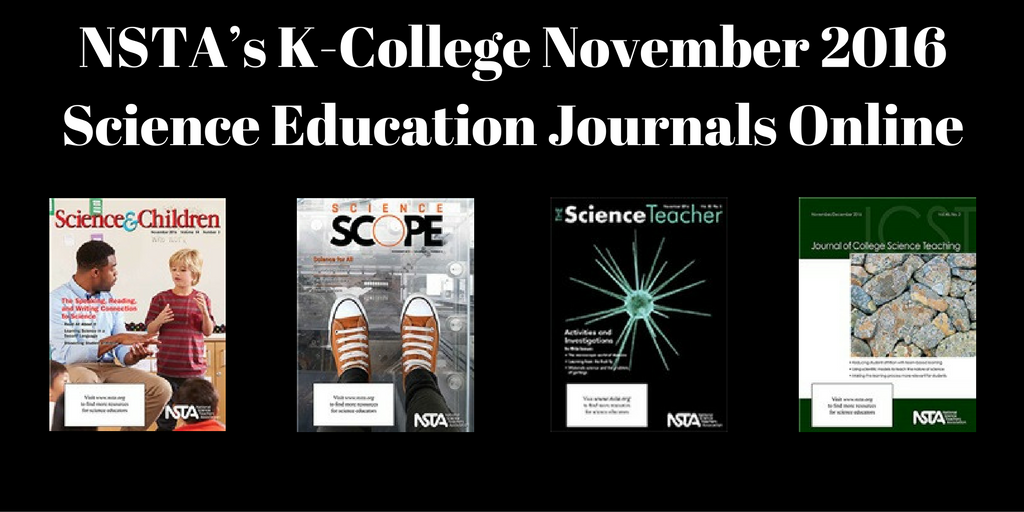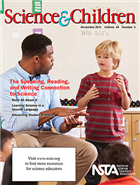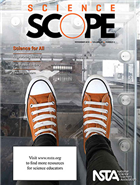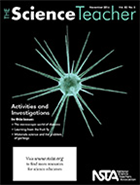NSTA’s K-College November 2016 Science Education Journals Online
By Korei Martin
Posted on 2016-11-03
Want to integrate writing into your science lessons for your young students? Want to help students feel more comfortable in a science classroom? Are you looking at using your honors-level students to increase K-12 students’ interest in STEM education? Or do you simply need some new activities for you science classroom? The November K-College journals from the National Science Teachers Association (NSTA) have the answers you need. Written by science teachers for science teachers, these peer-reviewed journals are targeted to your teaching level and are packed with lesson plans, expert advice, and ideas for using whatever time/space you have available. Browse the November issues; they are online (see below), in members’ mailboxes, and ready to inspire teachers.
Integrating writing into science lessons can be a daunting task for educators. The difficulty lies in developing speaking, reading, and writing skills with students who have a limited science vocabulary. The activities in this issue allow students to develop a working vocabulary within a science context, allowing them to communicate their findings with a scientific perspective and voice.
Featured articles (please note, only those marked “free” are available to nonmembers without a fee):
- Dissecting Student Dialogue
- Learning Science in a Second Language
- Supporting Academic Language
- Free – Read All About It
- Free – Editor’s Note: Meeting the Challenges of Communicating Science
- Full Table of Contents
Many students feel vulnerable when they step into the science classroom and will be in need of various types of support if they are to be successful in science. You can help more of your students step into the classroom with confidence with the help of the teaching strategies featured in this issue of Science Scope.
Featured articles (please note, only those marked “free” are available to nonmembers without a fee):
- Using Place-Based, Structured Inquiry to Motivate At-Risk Students
- Learning to Read Science
- An Interdisciplinary Approach to Gene Therapy
- Free – “Accelerating” Science Learning With Reading
- Free – From the Editor’s Desk: Speaking Up for All
- Full Table of Contents
This issue offers a smorgasbord of activities, topics, and subject areas to engage your students in science learning. The Idea Bank reviews an essential lab skill—making accurate and precise measurements. “Materials Science and the Problem of Garbage” reveals that recycling alone, though important, doesn’t solve our trash problems. Scientists have been using fruit flies in their genetics studies for generations. “Learning From the Fruit Fly” presents a related but easier way to teach Mendel’s laws, meiosis, and Punnett squares. “Settling the Score” explores a historic debate over atomic bonding. And, finally, our cover story, “The Microscopic World of Diatoms” investigates this biological indicator that can help detect pollution. Our usual columns and departments round out the issue.
Featured articles (please note, only those marked “free” are available to nonmembers without a fee):
- The Microscopic World of Diatoms
- Settling the Score
- Learning From the Fruit Fly
- Free – Editor’s Corner: Growing Mountains of Trash
- Free – Materials Science and the Problem of Garbage
- Full Table of Contents
Journal of College Science Teaching 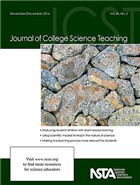
In this issue’s Two-Year Community column, read about an honors-level service learning program at a two-year college in which students served as mentors and engaged K–12 students in STEM topics outside the classroom, with the intention of increasing student interest and retention in STEM majors. Also, learn how one researcher incorporated mini-research proposals into her lab courses to expose undergraduate students to methods and technologies they wouldn’t otherwise encounter and to better prepare them for more advanced writing. And in the Research and Teaching department, see the article that explores how the level of questioning impacts learning in large general biology classes using case studies and personal response systems (clickers).
Featured articles (please note, only those marked “free” are available to nonmembers without a fee):
- Using Citizen Science to Engage Preservice Elementary Educators in Scientific Fieldwork
- Team-Based Learning Reduces Attrition in a First-Semester General Chemistry Course
- An Authentic Research Experience for Undergraduates on a Budget: Using Data From Simple Experiments to Develop Mini-Research Proposals
- Free – Effects of Gender on Student Response to Course-Based Research
- In the Midst of a Shift: Undergraduate STEM Education and “PBL” Enactment
- Full Table of Contents
Get these journals in your mailbox as well as your inbox—become an NSTA member!
The mission of NSTA is to promote excellence and innovation in science teaching and learning for all.
Follow NSTA
Disclaimer: The views expressed in this blog post are those of the author(s) and do not necessarily reflect the official position of the National Science Teaching Association (NSTA).


